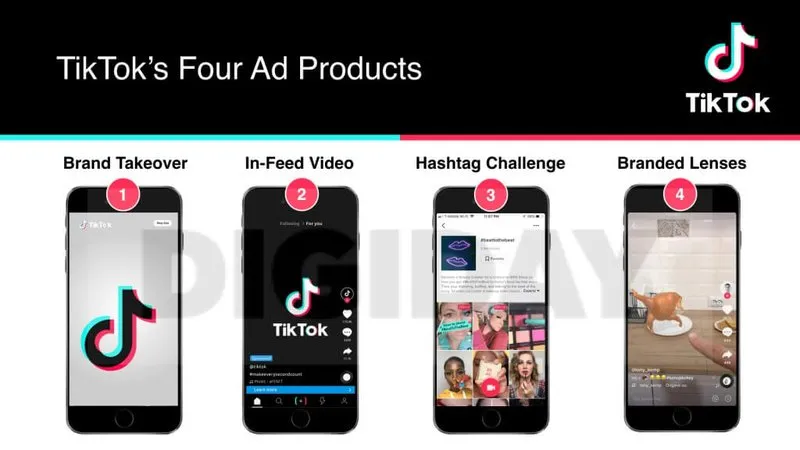TikTok Ad Placement Strategy: A Complete Guide for 2025
TikTok has rapidly become one of the most influential social media platforms, particularly for reaching younger, highly engaged audiences. With its diverse ad offerings and unique algorithm, TikTok has created an environment that allows advertisers to connect with users in an organic, non-intrusive way. However, to fully leverage TikTok for advertising, brands must understand the intricacies of its ad placement strategy.
Ad placement refers to how and where ads are shown within the TikTok platform, and choosing the right placement is critical to maximizing the effectiveness of your campaign. In this article, we will explore TikTok’s ad placement strategy, detailing the different ad types, the optimal placement methods, and how to use TikTok’s advanced targeting features to ensure your ads are seen by the right audience.
What is TikTok Ad Placement?
TikTok ad placement refers to where your ads appear on the platform, how they are displayed, and who sees them. TikTok offers several ad formats that provide businesses with the opportunity to advertise in various sections of the app. The goal of ad placement is to ensure that your ads are seen by users who are most likely to engage with your content, resulting in higher click-through rates (CTR) and conversions.
TikTok offers both automatic and manual ad placements, depending on how much control you want over where your ads appear. Understanding the pros and cons of each type of placement and how to optimize them will help you run effective TikTok ad campaigns.
Types of TikTok Ads and Their Placements
TikTok provides a variety of ad formats, each with its own placement opportunities. These formats are designed to integrate seamlessly with user-generated content, making ads feel more native to the platform.
1. In-Feed Ads
In-Feed Ads are the most common and natural form of advertising on TikTok. These ads appear within the “For You” feed as users scroll through their content. They are designed to blend in with organic content but can be easily distinguished by a small “Sponsored” label.
Placement Details:
- In-Feed Ads appear between user videos, making them highly visible as users swipe through the content.
- They support various formats such as images, videos, carousels, and even single-image ads.
- They allow for clickable CTAs that take users to external landing pages, app downloads, or more content within TikTok.
Why Use In-Feed Ads:
- High engagement: Since these ads appear in the native content feed, users are more likely to interact with them as they scroll.
- Large reach: Given the vast number of active users on TikTok, in-feed ads have the potential to reach a broad audience.
2. TopView Ads
TopView Ads are a premium ad format that appears as soon as the TikTok app is opened. These ads are displayed at the top of the “For You” feed and can last for up to 60 seconds, offering an impactful first impression for advertisers.
Placement Details:
- TopView Ads occupy the top of the screen, ensuring that they are the first thing users see when they open the app.
- They are video-based and can showcase longer, more engaging content compared to other formats.
- Since TopView Ads appear as soon as the app opens, they are often seen by users who are actively engaging with TikTok.
Why Use TopView Ads:
- Maximum visibility: TopView Ads have prime placement, ensuring maximum exposure.
- High engagement rates: Users tend to watch these ads in full, as they appear right when the app is opened.
- Increased brand awareness: Due to their prominent position, TopView Ads are ideal for boosting brand recognition.
3. Branded Hashtag Challenges
Branded Hashtag Challenges encourage TikTok users to participate in specific trends by creating and sharing content using a particular hashtag. These ads appear on the “Discover” page, where users can see trending hashtags and challenges.
Placement Details:
- The branded hashtag appears on the “Discover” tab, making it easily discoverable to users interested in current trends.
- Users can interact with the hashtag challenge by creating their own videos using the brand’s hashtag, further promoting user-generated content.
Why Use Branded Hashtag Challenges:
- High engagement: Hashtag challenges are one of the most popular formats on TikTok, encouraging users to create their own content, thus spreading brand awareness organically.
- Viral potential: Since TikTok thrives on viral content, branded hashtag challenges can quickly gain momentum and spread to a large audience.
- Authenticity: The user-generated aspect of hashtag challenges makes the campaign feel more organic and less like a traditional ad.
4. Branded Effects
Branded Effects allow brands to create custom augmented reality (AR) filters that users can apply to their videos. These filters are available for users to incorporate into their content, enabling them to engage directly with the brand.
Placement Details:
- Branded Effects are integrated directly into the TikTok video creation tools, allowing users to apply them to their own content.
- These effects can be used across a wide range of user-generated content, enhancing engagement by allowing users to interact with the brand in a fun and creative way.
Why Use Branded Effects:
- Enhanced creativity: Custom AR filters provide an innovative way for users to engage with a brand in a more interactive and entertaining manner.
- User-generated content: As users apply your brand’s effects, your brand gets additional exposure.
- Viral potential: If the branded effect catches on, it can lead to significant organic reach as users share their videos with the effect.
5. Spark Ads
Spark Ads allow advertisers to promote existing organic content by boosting posts from users or their own brand account. These ads appear within the “For You” feed just like regular in-feed content but are boosted to a larger audience.
Placement Details:
- Spark Ads appear within the native TikTok feed, integrated seamlessly with other content.
- These ads are designed to look like organic posts, making them less intrusive to users.
- Brands can choose to boost content from their account or from users who have organically posted about the brand.
Why Use Spark Ads:
- Native feel: Since Spark Ads use organic content, they feel more authentic and less like traditional ads, which can increase user engagement.
- Cost-effective: Spark Ads allow brands to repurpose existing content, making them a more budget-friendly option.
- High engagement: Since users are already interacting with the content, boosting it can amplify engagement.
TikTok Ad Placement Strategy: Best Practices
To maximize the impact of your TikTok ads, it’s essential to implement a solid ad placement strategy. Here are a few best practices for optimizing your TikTok ad placements:
1. Targeting the Right Audience
TikTok offers advanced targeting options to ensure your ads are seen by the right users. You can target users based on demographics, interests, behaviors, and location. Additionally, custom audiences and lookalike audiences allow you to target individuals who have interacted with your previous content or resemble your ideal customers.
2. Choose the Right Ad Format for Your Goal
Each TikTok ad format has a unique strength. If your goal is brand awareness, TopView or Branded Hashtag Challenges may be ideal due to their ability to reach large audiences. For higher engagement, Spark Ads or Branded Effects are great options that encourage users to interact with your brand in a creative way.
3. Optimize for Mobile Viewing
TikTok is a mobile-first platform, so all your ads should be optimized for mobile screens. Use high-quality visuals, concise messaging, and engaging elements like music or text overlays to capture users’ attention quickly.
4. Experiment with Different Placements
A good ad strategy involves testing different placements to see which works best for your business. Run A/B tests with In-Feed Ads, TopView Ads, and Branded Effects to determine which one drives the best results for your campaign objectives.
5. Leverage User-Generated Content
TikTok thrives on user-generated content (UGC), and leveraging this content in your ad strategy can help your brand feel more authentic. Consider running user-generated hashtag challenges or promoting existing user content through Spark Ads.
6. Set Clear Goals and KPIs
Before launching your campaign, set clear objectives and KPIs (Key Performance Indicators) to measure success. This could be anything from increasing brand awareness to generating leads or driving traffic to your website. Monitor your results and adjust your strategy as needed.
Conclusion
A well-thought-out TikTok ad placement strategy is essential for any brand looking to succeed on the platform. By understanding the different ad types and placements, you can create a tailored approach that maximizes your reach, engagement, and conversions. TikTok offers a unique combination of creativity and precision targeting, allowing businesses to reach the right audience in a way that feels organic and engaging.
Whether you’re using In-Feed Ads, TopView Ads, or Branded Hashtag Challenges, ensure that your ad placements align with your campaign goals. With the right approach and strategic use of TikTok’s ad placement features, you can take your marketing efforts to the next level in 2025 and beyond.



